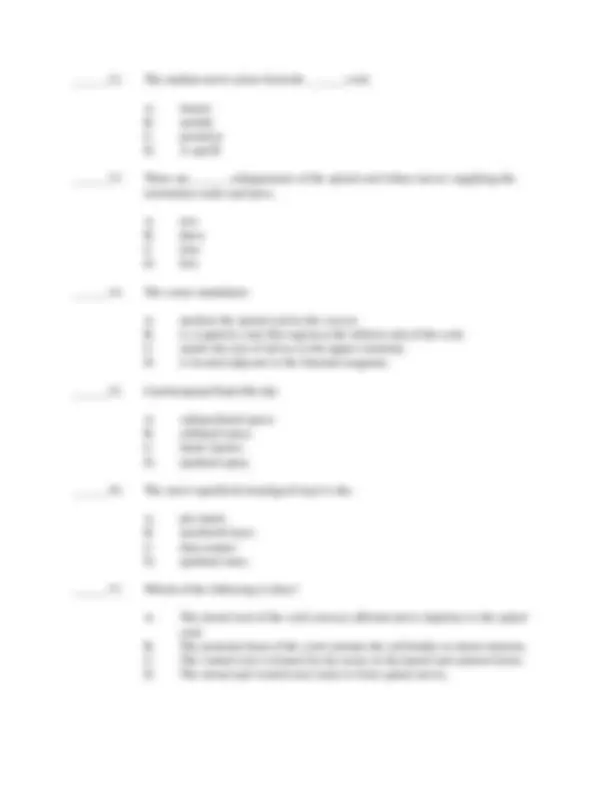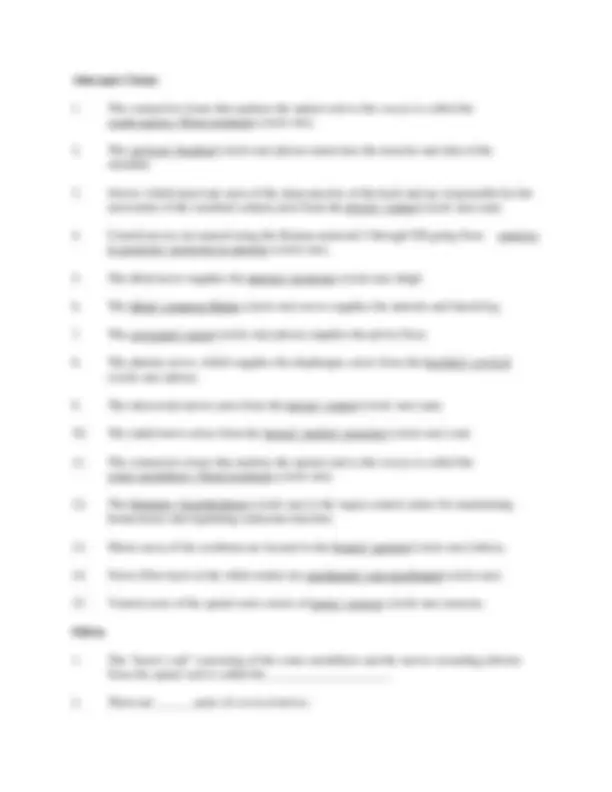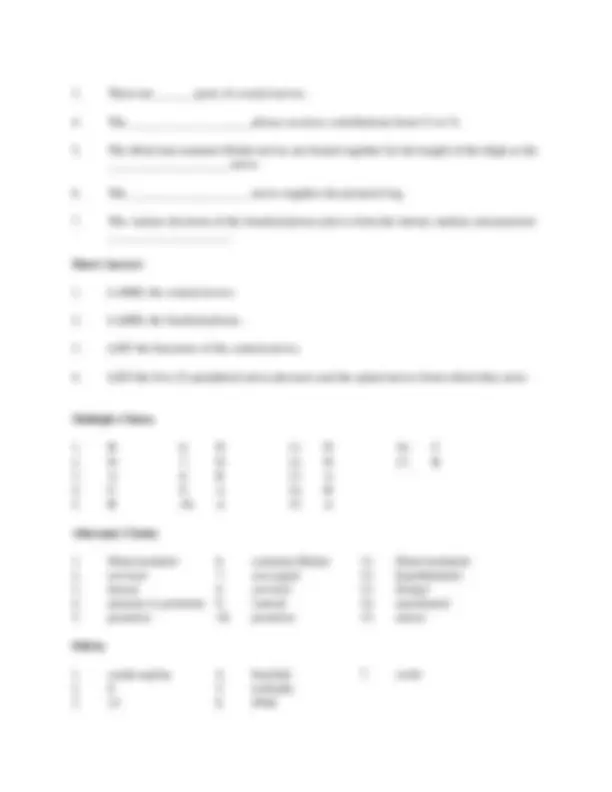





Study with the several resources on Docsity

Earn points by helping other students or get them with a premium plan


Prepare for your exams
Study with the several resources on Docsity

Earn points to download
Earn points by helping other students or get them with a premium plan
Community
Ask the community for help and clear up your study doubts
Discover the best universities in your country according to Docsity users
Free resources
Download our free guides on studying techniques, anxiety management strategies, and thesis advice from Docsity tutors
Material Type: Exam; Professor: Armstrong; Class: Human Anatomy for Sports Med; Subject: Sports Medicine; University: Eastern Michigan University; Term: Unknown 1989;
Typology: Exams
1 / 5

This page cannot be seen from the preview
Don't miss anything!




SPMD 201 – Human Anatomy for Sports Medicine Spinal Cord and Spinal Nerves Chapter 12
Multiple Choice
______1. The Roman numerals assigned to each cranial nerve reflect:
A. the order of discovery. B. the sequence in which the nerves emerge from the brain. C. their importance, with the highest numbers being the most important. D. the complexity of each nerve, with complex nerves having higher numbers.
______2. All spinal nerves from C 2 to L 5 exit through the vertebral column through a(n):
A. vertebral foramen. B. spinal foramen. C. dorsal root ganglion. D. intervertebral foramen.
______3. There are ______ cervical spinal nerves.
A. eight B. twelve C. six D. five
______4. Spinal nerves C5-T1 make up the ______ plexus.
A. sacral B. lumbar C. brachial D. cervical
______5. If a ventral root of a spinal nerve were cut, the regions innervated by that spinal nerve would experience complete loss of:
A. sensation. B. movement. C. sensation and movement.
______6. Which of the following nerves is part of the brachial plexus?
A. peroneal B. ansa cervicalis C. ischiadic (sciatic) D. musculocutaneous
______7. Damage to the phrenic nerve would result in:
A. the loss of motor activity in the arms. B. and increased heart rate. C. an inability to swallow. D. difficulty breathing.
______8. The ischiadic (sciatic) nerve is composed of the:
A. femoral nerve and tibial nerve. B. tibial nerve and common fibular nerve. C. femoral nerve and the obturator nerve. D. common fibular nerve and the pudendal nerve.
______9. Which nerve is involved when a dancer points her toes?
A. tibial B. femoral C. obturator D. pudendal
______10. The femoral nerve supplies the ______ thigh.
A. anterior B. lateral C. posterior D. medial
______11. The obturator nerve supplies the ______ thigh.
A. anterior B. lateral C. posterior D. medial
Alternate Choice
Fill-In
Short Answer
Multiple Choice
Alternate Choice
Fill-In